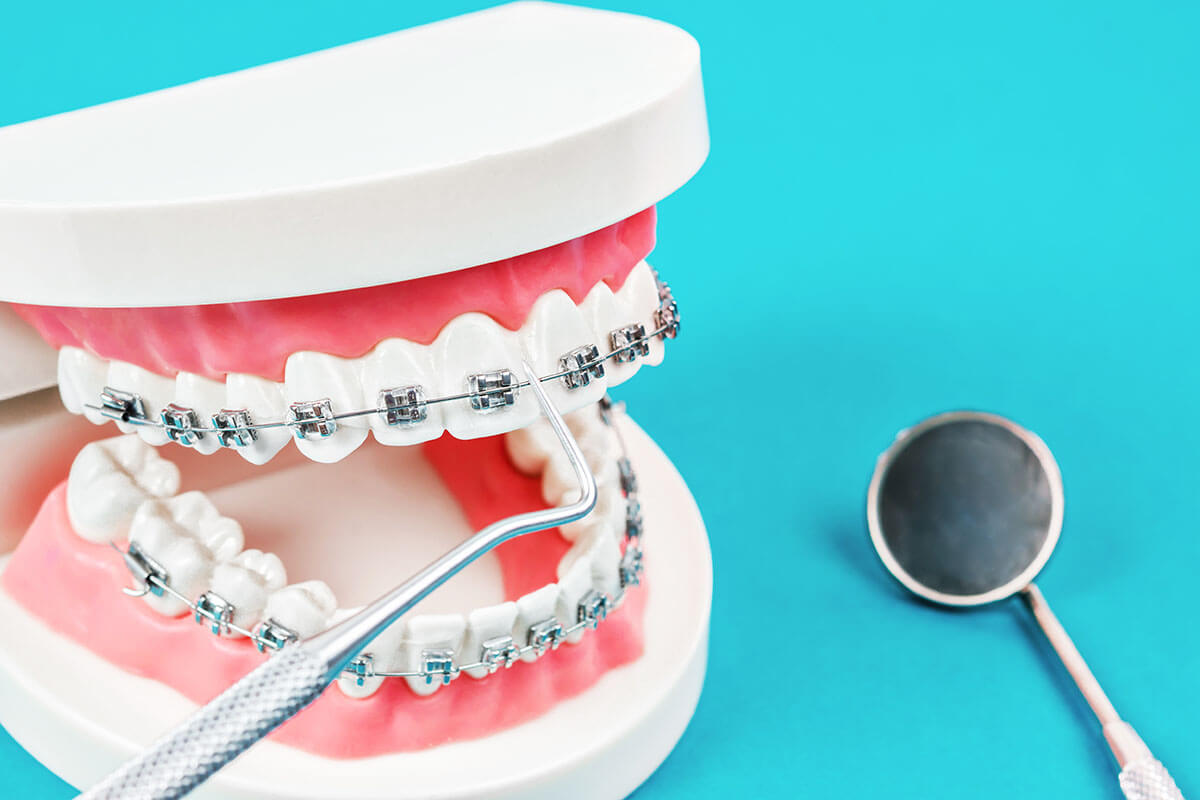Your Guide to Cumming Invisalign: Straightening Teeth with Style and Comfort
Your Guide to Cumming Invisalign: Straightening Teeth with Style and Comfort
Blog Article
Comprehensive Overview to Orthodontics Procedures for Remedying Dental Misalignments
Recognizing the details of each treatment, including their systems, advantages, and possible drawbacks, is crucial in making informed choices about one's orthodontic treatment. As we navigate with the thorough guide to orthodontic treatments for fixing dental misalignments, the intricate details of each method will unfold, dropping light on the course toward a practical and harmonious dental alignment.
Orthodontic Procedures Introduction

Along with clear aligners and conventional dental braces, orthodontists may additionally advise other interventions like headgear, palatal expanders, or retainers to address specific placement concerns (orthodontics). These procedures are customized to every client's unique needs and might involve a combination of therapies to accomplish the preferred results. Normal modifications and surveillance are vital parts of orthodontic therapy to make sure development gets on track and to make any essential alterations along the road. By undertaking orthodontic procedures, clients can not only accomplish a straighter grin yet additionally improve their overall dental health and wellness and feature.
Traditional Braces: How They Function
When considering orthodontic treatments for oral imbalances, traditional dental braces stick out as a reliable approach for remedying teeth positioning. Traditional dental braces include braces, cables, and bands that collaborate to apply constant stress on the teeth, progressively relocating them into the preferred placement. The braces are connected to the teeth utilizing a special adhesive, and the cords are threaded through the braces. By readjusting the stress of the wires, orthodontists can manage the direction and pressure related to each tooth, directing them into correct placement over time.
One key element of how traditional dental braces job is the procedure of bone renovation. As pressure is put on the teeth through the dental braces, the bone bordering the teeth is improved to support the brand-new tooth settings. This renovation is necessary for the long-term stability of the remedied alignment. Patients will certainly need normal adjustments at the orthodontist's workplace to make sure the braces remain to apply the correct pressure for reliable teeth motion.
Unnoticeable Aligners: Cons and pros
These clear, customized trays are virtually unseen when used, making them an appealing alternative for individuals seeking an extra cosmetically pleasing orthodontic treatment. Individuals can eliminate the aligners before eating or cleaning their teeth, lowering the threat of food getting stuck in the appliance and streamlining the cleansing procedure.

Surgical Orthodontic Options
Surgical interventions in orthodontics present feasible alternatives for addressing complex dental misalignments that may not be efficiently solved via conventional orthodontic treatments. While traditional braces and invisible aligners can remedy several orthodontic concerns, certain situations require medical treatment to attain ideal results. Surgical orthodontic options are usually suggested for severe malocclusions, significant jaw disparities, and instances where the underlying bone framework needs modification to attain correct positioning.
One typical surgical More hints orthodontic procedure is orthognathic surgery, which involves rearranging the jaws to remedy practical issues such as trouble eating or speaking. This surgery is frequently carried out in partnership with an orthodontist that assists align the teeth prior to and after the treatment. Surgical orthodontics might likewise include procedures to expose influenced teeth, get rid of excess periodontal cells, or improve the jawbone to develop an extra unified face account.
Prior to considering medical orthodontic options, people go through a comprehensive analysis to figure out the necessity and possible benefits of such treatments. orthodontics. While surgical procedure may appear difficult, it can significantly enhance both the function and appearances of the smile in situations where standard orthodontic treatments fail
Retainers and Post-Treatment Care

Failure to conform with post-treatment care instructions can result in regression, where the teeth gradually move back towards their initial placements. Regular retainer wear, excellent dental hygiene, and regular dental exams are essential for maintaining the outcomes attained with orthodontic surgical treatment and making sure the long-lasting stability of the corrected oral positioning.
Final Thought
In verdict, orthodontic treatments provide numerous choices for dealing with dental imbalances. Surgical orthodontic choices are readily available for much more extreme misalignments. Generally, orthodontic procedures can successfully improve dental health and aesthetic look.
As we navigate via the comprehensive guide to orthodontic treatments for correcting oral imbalances, the elaborate information of each approach will unravel, losing light on the path toward a practical and unified oral alignment. - cumming invisalign
One of the most common orthodontic treatments is the use of dental braces, which are composed of steel brackets and cables that use mild stress to gradually shift teeth into the preferred placement.When considering orthodontic treatments for local dental clinic dental misalignments, standard dental braces stand out as a reliable method for correcting teeth positioning. Furthermore, undetectable aligners might not be suitable for complex orthodontic problems that require more considerable teeth motion, as they are typically suggested for light to modest cases. Retainers are customized orthodontic gadgets developed to hold teeth in their fixed settings after the completion of orthodontic treatment.
Report this page